A Guide To Accomplishing The Ijen Crater Hike in East Java
Group of composite volcanoes, electric blue flames, and a beautiful turquoise acidic lake await you in the Ijen Crater located in the Banyuwangi Regency of East Java, Indonesia.
Kawah Ijen, also known as the Ijen Crater is 35kms (about 1.5 hours) away from Banyuwangi. The Ijen caldera is home to the world’s largest acidic crater lake and the complex is also home to the Gunung Merapi (Mountain of Fire) stratovolcano which is the highest point of that complex. It is highly important to note that the mount Ijen hike is an arduous one and you ought to have at least moderate level of fitness to face all the elements of the hike gracefully.
After our Mount Bromo expedition, we exited the national park and headed towards Probolinggo where we hopped on the KAI train to Banyuwangi for our Ijen Crater tour.
🌋 What does the Ijen Crater hike constitute of?
There are three parts to the Ijen hike. The first part involves trekking down the crater to see the electric blue flames. The second part involves hiking back up to the top to hopefully see the magnificent turquoise lake. The third part involves taking the path on the left and going around the rim of the crater to an area where sunrise view point is. The sun rises on the opposite side of the crater and not over the crater where you would be standing.
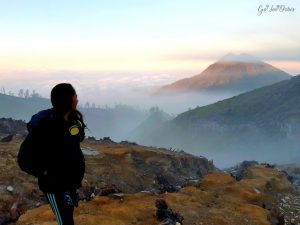
🌋 Itinerary for the Ijen Crater Hike
🚀 12:00am: Get picked up from Banyuwangi city (precisely where your accommodation is) and drive for 1.5 hours to the base camp of Mount Ijen. The Paltuding Office is the base camp for the Ijen hike.
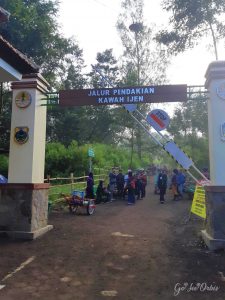
🚀 1:30am: Commence the 2-hour hike upwards and reach the rim of the crater. This path is rather steep, but very much doable without much of a snag, given your fitness level is moderate!
🚀 3:30am: Hike down to the bank of the crater for 45 minutes for 900 metres to witness the electric blue flames.
This is the challenging part of the hike because it involves trekking through a rocky terrain that’s more or less a pile of rubble – super uneven and slippery due to the debris!
The blue flames disappear by 5:00am. The blue flame isn’t lava but ignited light from the combustion of sulphuric gases when it comes in contact with air, and emerges from the cracks of the crater due to high pressure and has a temperature of up to 600°C.
There is an active sulphur mine at the blue flames viewing spot where you’ll see miners carrying about 90kgs of sulphur on their backs to the top of the crater.
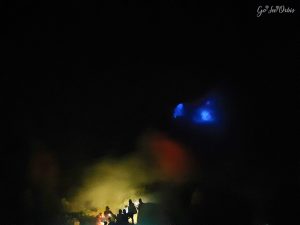

🚀 4:45am: Start heading back up to the crater rim to watch the sun light up the sky and shimmer over the turquoise-coloured acidic lake.
The lake has been known to become acidic due to the highly condensed hydrochloric acid because of the hydrogen chloride gas emitted by the volcano which reacted with the water.
You’ll also get stunning views of the mountain ranges around the vicinity from the sunrise view point.
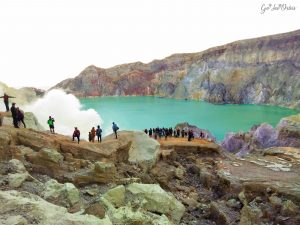
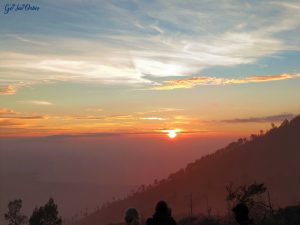
🚀 6:00am: Walk back down to the base camp for 2 hours. Since this path is quite steep, you’ll have to ensure you have enough grip and resistance to oppose gravity! But the views are stunning, and you’ll also get to marvel at the beauty of Mount Merapi!
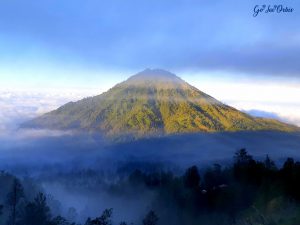

🚀 8:00am: Once back to the base camp and parking lot area, you’ll be greeted with deep fried bananas. Probably not the healthiest breakfast option, but they are wonderfully tasty! You can also purchase other snacks or hot drinks from the café.
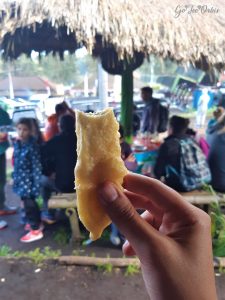
🚀 8:30am: You’ll be driven to Jagir waterfall for a short visit to take in some fresh nature goodness after the toxic (well sort of) and stinky volcano hike!
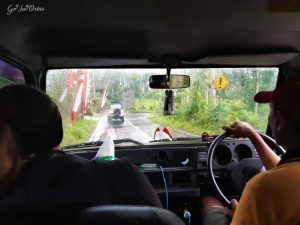
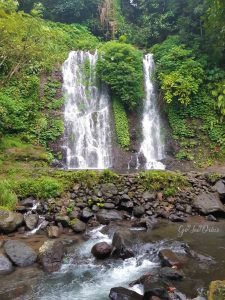
9:30am: Get dropped back to your place of stay in Banyuwangi. That ends your Ijen Crater tour.
🌋 How much does it cost to hike the Ijen Crater?
I chose to go with a tour agency and paid IDR 250,000 (USD 17.50) per person. The inclusions were:
- Transport to and from Ijen to your accommodation in Banyuwangi
- Entrance fee for Ijen Crater
- A gas mask (highly recommended unless you fancy knocking a year or two of your life breathing in that stinky sulphur gas)
- Flashlight
We suggest opting for a tour because the entry fee ticket alone costs IDR 150,000 (USD 10) per person and gas masks are normally available for rent at IDR 50,000 (USD 3.50). You also need to arrange for transport to get to Ijen from Banyuwangi and back. So that itself will cost more than IDR 250,000 (USD 17.50), which makes going with a tour a better option!
🌋 Preparation tips to accomplish the Mount Ijen Hike
- Ensure you wear proper hiking shoes so you don’t have troubles walking up and down the steep hills and the rocky terrain.
- Wear warm clothes for when it gets really cold in the night, and a simple t-shirt or tank underneath for when it gets warm after sunrise. It’s also a good idea to wear a waterproof windcheater in case it rains.
- It’s not always a clear morning to see the acidic lake in its full glory as the smog can obstruct most of the view. While that may be a tad disappointing, try waiting a little bit longer, and if you’re lucky, you may get to see the turquoise beauty!
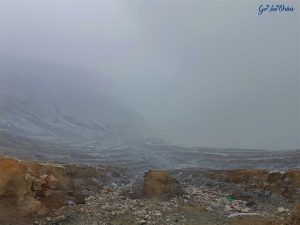
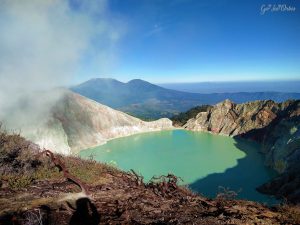
🌋 Story of our Ijen Crater Hike can be read on our Instagram page! You’ll be inspired 😉🌋

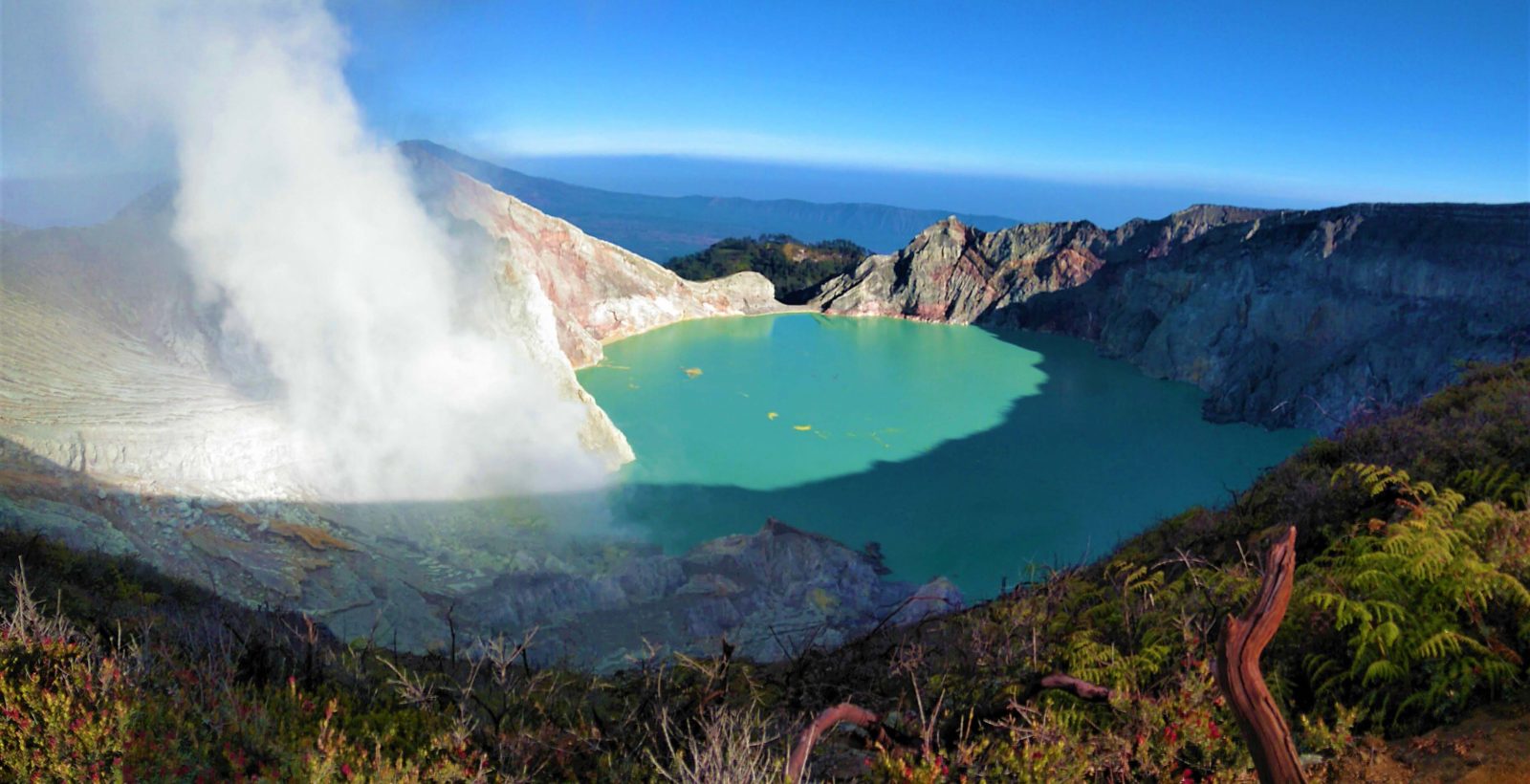
The blue flames look like they’re from an alien planet! Such diversity can be found on Earth…
Hello,
thank you for this guide, lots of useful information! The tour looks amazing, may I ask you which company you chose? Thank you!